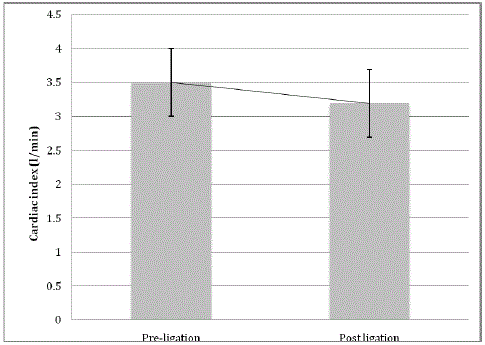Make the best use of Scientific Research and information from our 700+ peer reviewed, Open Access Journals that operates with the help of 50,000+ Editorial Board Members and esteemed reviewers and 1000+ Scientific associations in Medical, Clinical, Pharmaceutical, Engineering, Technology and Management Fields.
Meet Inspiring Speakers and Experts at our 3000+ Global Conferenceseries Events with over 600+ Conferences, 1200+ Symposiums and 1200+ Workshops on Medical, Pharma, Engineering, Science, Technology and Business
Short Communication Open Access
Arteriovenous Fistulae and Cardiovascular Function: The Relationship between Brain Naturetic Peptide, Cardiac Index and Access Flow
| Emma Aitken* and David K | |
| Department of Renal Surgery, Queen Elizabeth University Hospital, Glasgow, UK | |
| *Corresponding Author : | Emma Aitken Lecturer, Department of Renal Surgery Queen Elizabeth University Hospital, Glasgow, UK Tel: +0141 452 3298 E-mail: emmaaitken@nhs.net |
| Received: December 01, 2015 Accepted: December 17, 2015 Published: December 21, 2015 | |
| Citation: Aitken E, David K (2015) Arteriovenous Fistulae and Cardiovascular Function: The Relationship between Brain Naturetic Peptide, Cardiac Index and Access Flow. Kidney Disord Clin Pract 1:105. doi:10.4172/kdc-1000105 | |
| Copyright: © 2015 Aitken E, et al. This is an open-access article distributed under the terms of the Creative Commons Attribution License, which permits unrestricted use, distribution, and reproduction in any medium, provided the original author and source are credited. | |
Visit for more related articles at
| Short Communication |
| The Vascular Access Society defines “high-flow” AVF as those with Qa > 1000-1500 mL/min [1]. High vascular access blood flow (Qa) is believed to increase cardiac output and may lead to high output cardiac failure [2]. There is anecdotal evidence that high flow arteriovenous fistulae (AVF) can cause symptomatic heart failure with dyspnea, orthopnoea, paroxysmal nocturnal dyspnea and peripheral oedema [2,3]. |
| However there is little evidence in the literature attempting to quantify the cardiovascular effects of an arteriovenous fistula. Several years ago, Suttie and colleagues measured BNP in patients with maturing de novo AVF finding no effect on brain naturetic peptide (BNP) levels [4]. The authors report difficulties measuring BNP, which is renally excreted, in patients in varying degrees of renal failure and dialysis dependence. They also highlight that the cardiovascular effects of a maturing AVF are likely to be small and occur slowly enough to permit adaptive response. Recently we have published work on the cardiovascular changes in stroke volume and systemic vascular resistance that occur with temporary occlusion of a mature AVF [5]. We now describe our experience following permanent occlusion of an AVF. |
| The aim of this study was to evaluate the relationship between BNP, cardiac index (CI) and brachial artery blood flow (BA flow) in patients undergoing AVF ligation. |
| 14 asymptomatic patients with well-functioning renal transplants (eGFR>60 ml/min/1.73 m2) (in order to exclude any confounding effect of renal function on BNP levels) undergoing ligation of a brachiocephalic fistula (BCF) were identified. BA flow was measured via Doppler ultrasound (4-10 Hz Linear Probe, MindrayTM). CI was also measured pre and immediately post-ligation using thoracic bioimpendance technique (NICCOMOTM Medis GmbH). Serum BNP (CardioRenal Panel, Alere) was also measured pre-, immediately post and 6 weeks post-ligation. |
| The mean patient age was 47.9 ± 14.6 years (57.1% male). Mean BA flow was 1329.8 ± 793.7 ml/min. Mean CI pre-ligation was 3.5 ± 0.4 l/min/m2. There was a significant reduction in cardiac index following ligation of the AVF (Mean ΔCI was -0.31 ± 0.47 l/min/m2 [p=0.02]) (Figure 1). Mean BNP pre-ligation was 111.2 ± 23.7 pg/ml. This reduced to 94.1 ± 13.9 pg/ml immediately post ligation and 91.9±13.8 pg/ml after 6 weeks (p=0.04). There was good linear correlation between ΔBNP and both BA flow and ΔCI (r2 =0.56 and 0.53 respectively). |
| This work supports our previous ascertain that AVF exert significant haemodynamic effects on the cardiovascular system even in asymptomatic patients. These effects are rapidly reversible upon ligation of the AVF. Consideration of the cardiovascular effects should be given prior to creation of an AVF, particularly in an increasingly elderly, co-morbid haemodialysis population. |
| Funding |
| This work was supported by the Royal Society of Medicine. |
| References |
|
Figures at a glance
 |
| Figure 1 |
Post your comment
Relevant Topics
Recommended Journals
Article Tools
Article Usage
- Total views: 19942
- [From(publication date):
December-2015 - Aug 29, 2025] - Breakdown by view type
- HTML page views : 19016
- PDF downloads : 926